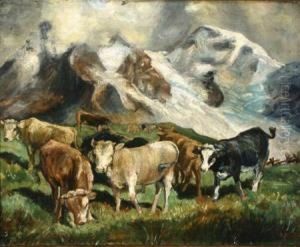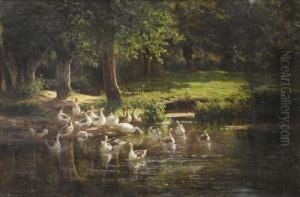Joseph-Rene Verdier Paintings
Joseph-René Verdier was a French artist known primarily for his work as a painter and lithographer. Born in 1872 in France, Verdier lived during a dynamic period in art history, marked by the transition from traditional academic art to the various movements of modern art. Though not as widely recognized as some of his contemporaries, Verdier contributed to the cultural and artistic milieu of his time.
Verdier's work was influenced by the trends of his era, including Impressionism and Post-Impressionism. He was part of the generation that sought to break away from the constraints of academic painting, looking instead for new ways to express light, color, and form. Verdier's paintings often depicted landscapes, urban scenes, and still lifes, characterized by a sensitive use of color and light.
Throughout his career, Verdier exhibited his work in various salons and galleries, gaining a measure of respect among art critics and collectors. Despite the overshadowing fame of his contemporaries like Claude Monet, Edgar Degas, and Vincent van Gogh, Verdier carved out a niche for himself in the French art scene. His lithographs, in particular, were well-regarded for their quality and the subtlety of their tonal gradations.
Joseph-René Verdier's life spanned a period of great turmoil and change, including two World Wars, which inevitably impacted the art world and the trajectory of his career. He passed away in 1947, leaving behind a body of work that, while it may not have garnered the same level of fame as that of the leading lights of his time, still represents an important facet of the French artistic legacy of the late 19th and early 20th centuries.


